Handball, jai alai and other activities that burn a lot of calories
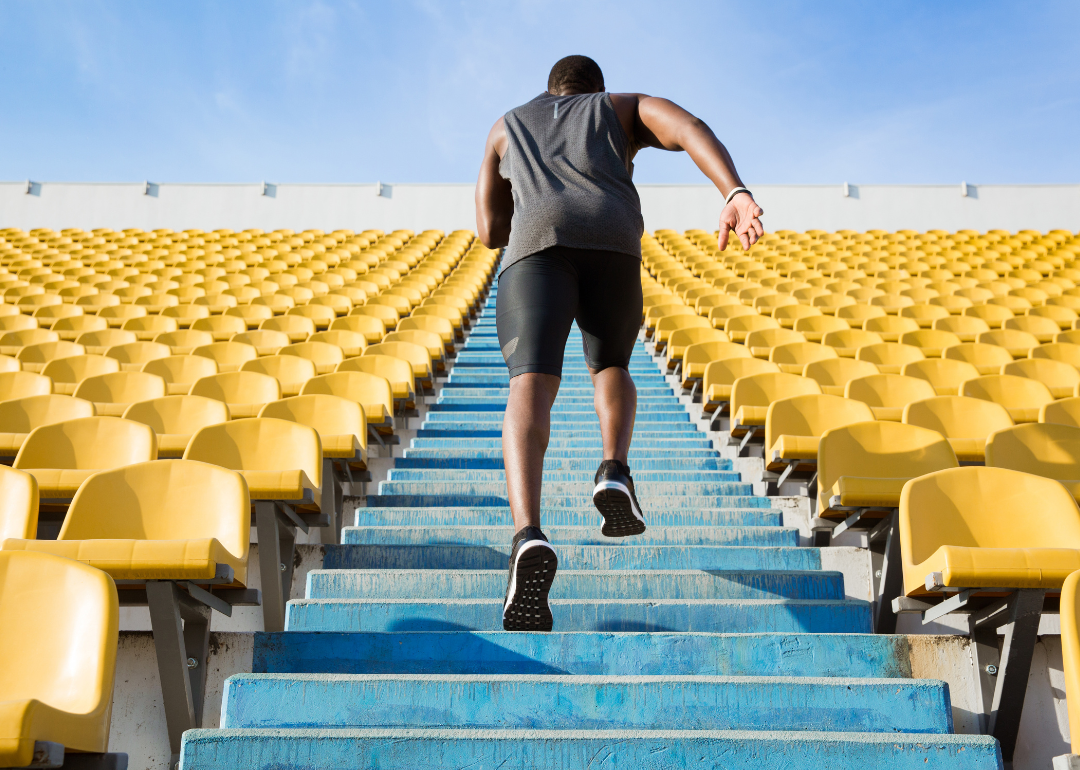
Dean Drobot // Shutterstock
Handball, jai alai and other activities that burn a lot of calories
The back view of a young man running upstairs at a stadium
Maybe jogging isn’t your cup of tea, and that’s okay. While it is a great workout to burn calories and get your heart rate going—which is important for decreasing heart disease risk factors and increasing life expectancy—going for a run just isn’t as enjoyable for some as it is for others. Luckily, data shows there are a variety of exercises that can burn a significant number of calories in a short period of time.
Gigacalculator used data from the Wisconsin Department of Health Services to determine activities that burn the most calories per hour. The analysis includes the number of calories burned for a 130-pound, 155-pound, and 190-pound person.
The calories that people burn running and biking at average rates (around a nine-minute mile for running and 14-15 mph for bicycling) didn’t make the list; however, athletes who are able to run 10.9 mph (or a 5.5-minute mile) can burn more than 1,000 calories in an hour, and those who are able to cycle over 20 mph can burn 940-1,400 calories, depending on body weight. For the rest of us, here are some other high-calorie-burning activities to try.
![]()
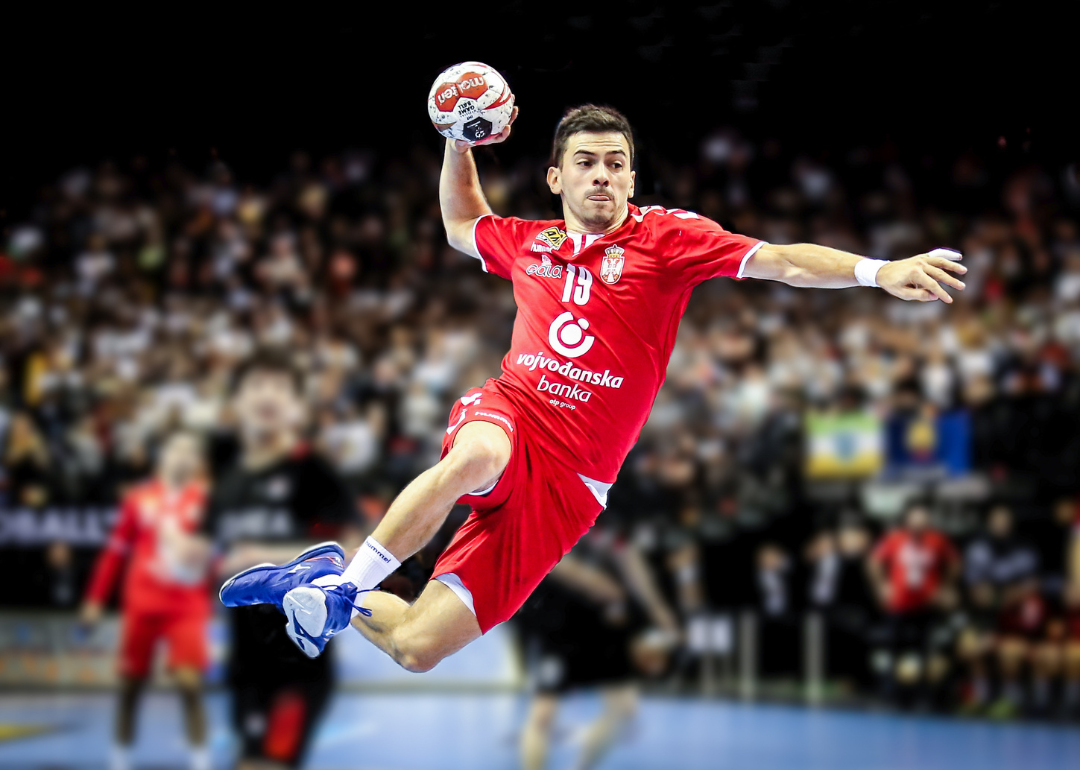
Michele Morrone // Shutterstock
Team handball
Handball player Nemanja Ilic of Serbia in a spectacular action during the Men’s Handball World Cup 2019
– Calories burned per hour based on body weight:
–- 130 lbs: 708
— 155 lbs: 844
— 190 lbs: 1,035
Handball is a team sport played between two teams of seven players—six on the court and one goalkeeper. The game is played on a court similar to the size of a basketball court or soccer pitch, and the players use their hands to try to throw the ball into the goal. But unlike in soccer, players are not allowed to touch the ball with their feet. When players have the ball, they can dribble it up to three steps, hold it for three seconds before passing, or shoot for a score. It’s different from American handball, which is similar to volleyball and involves hitting a ball against a wall. While team handball is played worldwide, it is most popular in Europe; the first game was played in Berlin in 1917. In order to play, you need a handball, a set of gloves, and two goals for each end.
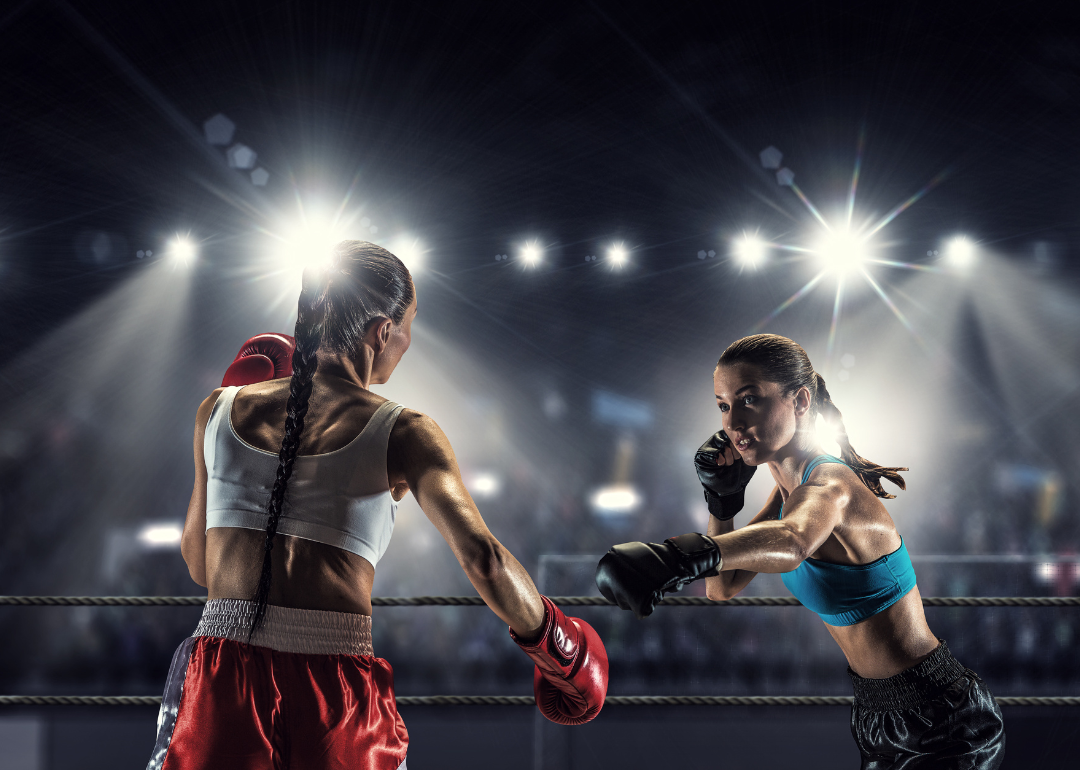
Sergey Nivens // Shutterstock
Boxing (in-ring)
Two girls boxing in the ring
– Calories burned per hour based on body weight:
— 130 lbs: 708
— 155 lbs: 844
— 190 lbs: 1,035
Boxing is a contact sport between two people within a boxing ring. There are two forms of boxing: amateur and professional. Amateur boxing typically lasts up to four rounds and is scored by the tallied number of clean strikes or hits to an opponent. This form of boxing became an Olympic event in 1908. Professional boxing is a 12-round affair wherein opponents face off without protective gear other than gloves and mouth guards. To win a match, a boxer must fight an opponent in a series of timed rounds, each ending at the sound of a bell or when the referee deems one of the opponents incapable of continuing.
Boxing dates back as early as 3000 B.C. and is now a popular sport in the United States and the United Kingdom. Both boxing forms require protective gloves, hand wraps, and mouth guards. In amateur boxing, padded headgear is also standard.

Canva
Jumping rope
A young man jumping rope at the gym
– Calories burned per hour based on body weight:
— 130 lbs: 708
— 155 lbs: 844
— 190 lbs: 1,035
Also known as “skipping rope,” jumping rope is considered an adequate workout and a popular activity for children. There’s evidence of skipping games gaining popularity in the 16th and 17th centuries, but jumping rope saw widespread popularity in the West among girls living in urban areas in the 19th century. While games like Double Dutch and Jump the River are popular for children, jump ropes are also an efficient tool for cardiovascular workouts for people of all ages. Some people even take part in competitions to perform advanced techniques such as the Double Under and Leg Over. To try it yourself, all you need is a jump rope—and maybe a good instructional video.
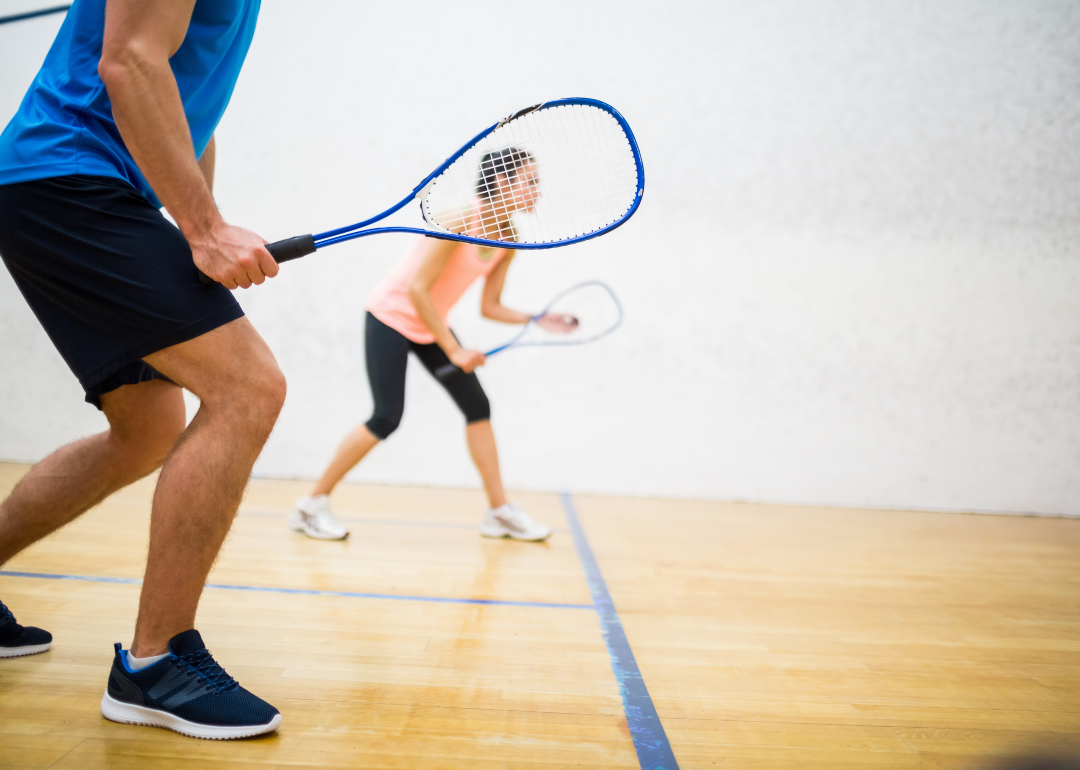
wavebreakmedia // Shutterstock
Squash
A woman about to serve the ball in a squash court
– Calories burned per hour based on body weight:
— 130 lbs: 708
— 155 lbs: 844
— 190 lbs: 1,035
Squash is a racquet sport played indoors either by two players with a wall or by four players broken up into two teams on a four-walled court. To play, players take turns hitting a small, hollow rubber ball with racquets between two lines on a wall, and if you don’t get it within the line limits, you’re out.
A squash match consists of three or five games. A player must score 11 points in a game to win, and the player with the most game wins will win the match. The ball is allowed to bounce once between hits, and to score a point the opponent must miss hitting the ball within the line limits. The person who wins the point then serves the next rally. Squash is most popularly played in the United States, England, and Egypt.
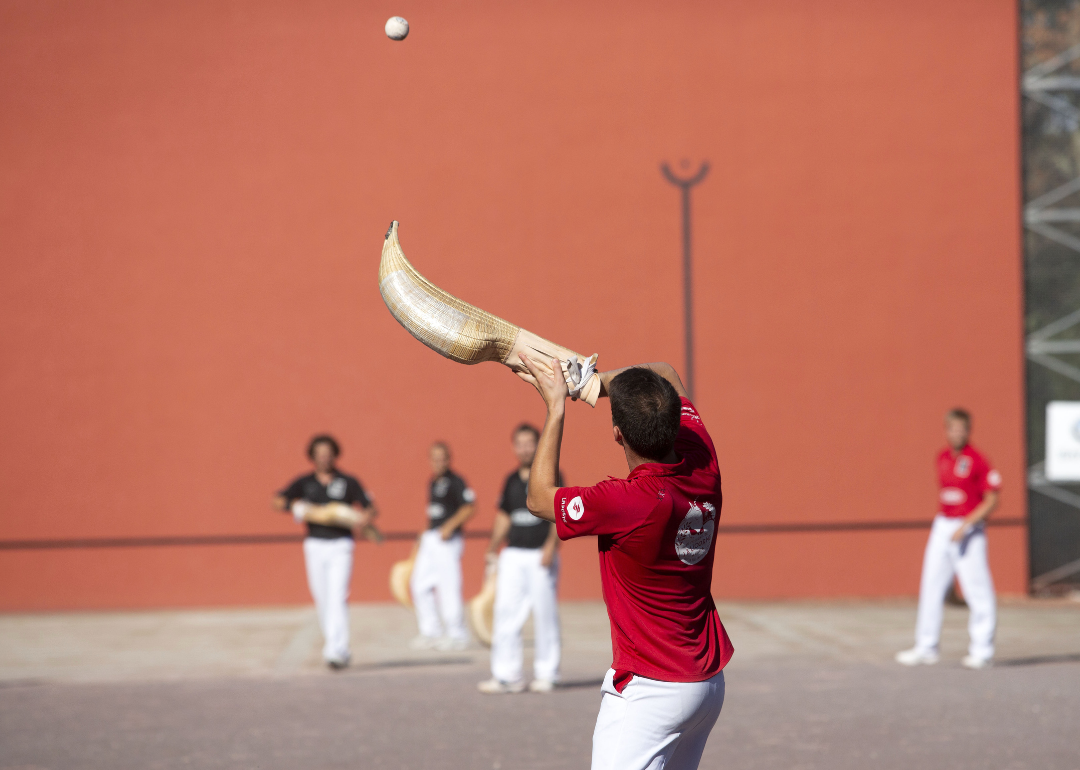
Andia // Shutterstock
Jai alai
A group playing jai alai outside
– Calories burned per hour based on body weight:
— 130 lbs: 708
— 155 lbs: 844
— 190 lbs: 1,035
Jai alai is another sport that uses a wall for the game, but the players use a hand-held wicker Cesta with a scoop that allows for catching and throwing. Similar to squash, jai alai has set lines on the wall where the ball must hit in order for players to stay in the game, but it consists of 14 sections. Two players will start at court one with another set of two to play a round, and whoever wins will move to the second court to face another team. If they continue to win, they will move all the way to court 14. But if they lose, they must go to the back of the line and let the new winning team continue. The first team to score seven points wins the whole game.
You can either play with eight teams or eight single players. Along with the basket Cesta, players need the jai alai acrylic helmet and a speeding ball. Jai alai is popular in Latin America as well as Spain, France, and the Philippines.
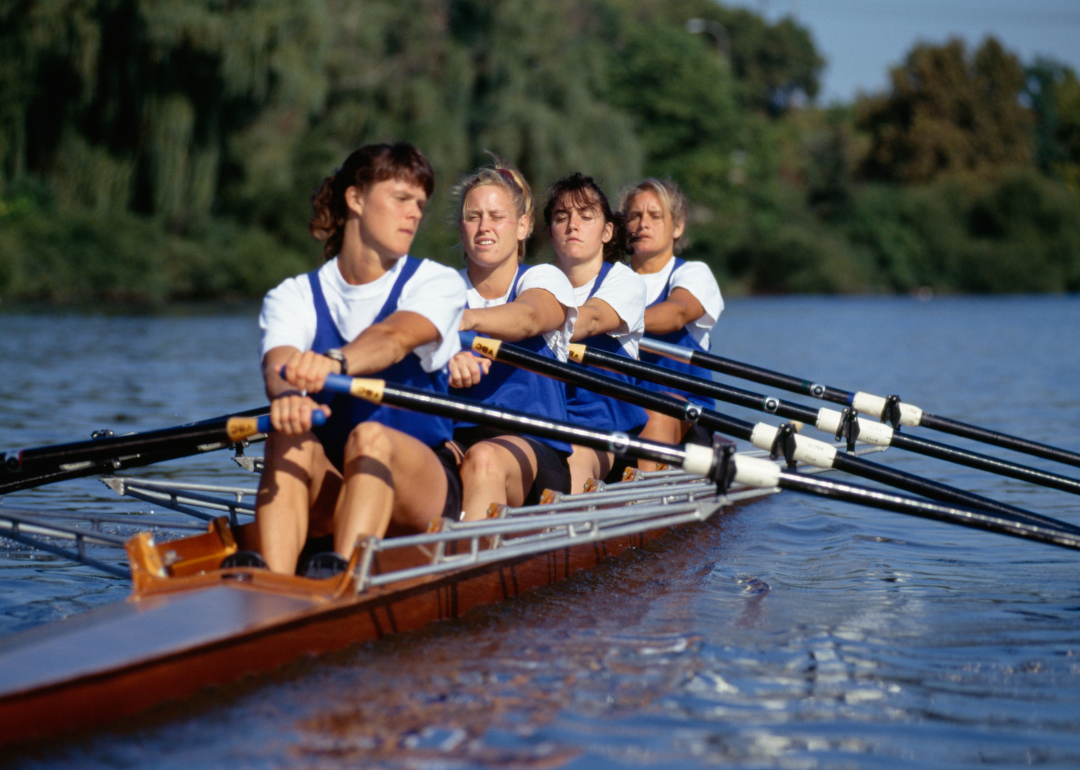
Canva
Competitive canoeing/rowing/crewing
A crew team rowing
– Calories burned per hour based on body weight:
— 130 lbs: 708
— 155 lbs: 844
— 190 lbs: 1,035
Also popularly known as “crew” in the United States, competitive rowing involves either single rowers or a team of eight rowers racing in a racing boat for 2,000 meters. Single rowers race by sculling, which involves holding two oars to row. Sweeping is another technique where teams (also known as “eights”) will row one oar with both hands. Eights are led by a coxswain, who sits on the boat to give instruction during the race.
Competitive rowing can be traced back to 17th-century London; the first American collegiate rowing team was founded at Yale College in 1843 (though a rowing club had existed in Detroit since 1839). Although crewing is more popular in England, Germany, and the United States, competitions are held worldwide; it is also a popular Olympic sport.
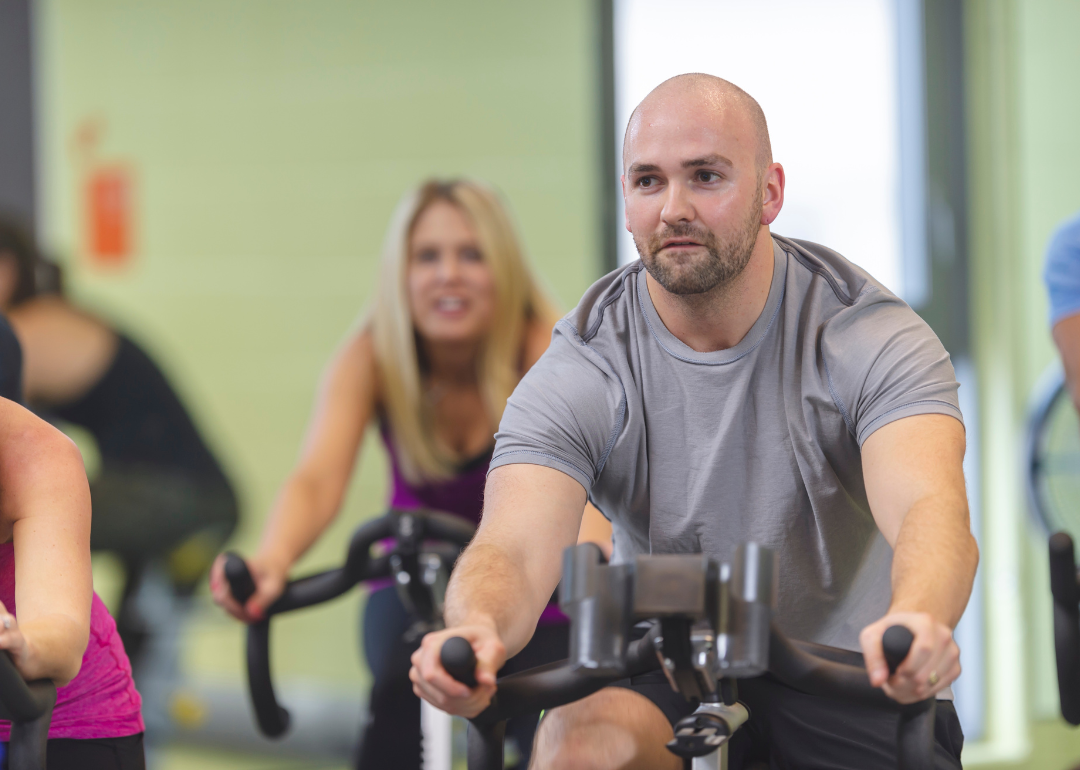
Canva
Stationary bicycling
People exercising on stationary bikes
– Calories burned per hour based on body weight:
— 130 lbs: 738
— 155 lbs: 880
— 190 lbs: 1,078
Based on very vigorous effort.
Thanks to workout brands like Peloton and SoulCycle, the exercise bike has gained popularity over recent years, and for good reason—stationary bicycling is an effective workout for calorie burn. The stationary bicycle is a considerable investment upfront—bikes range anywhere from $100 to over $2,000. But if you don’t want to make that kind of investment and already own an outdoor bicycle, there are attachments you can purchase that allow you to make that bike stationary for indoor workouts on days when the weather is against you.
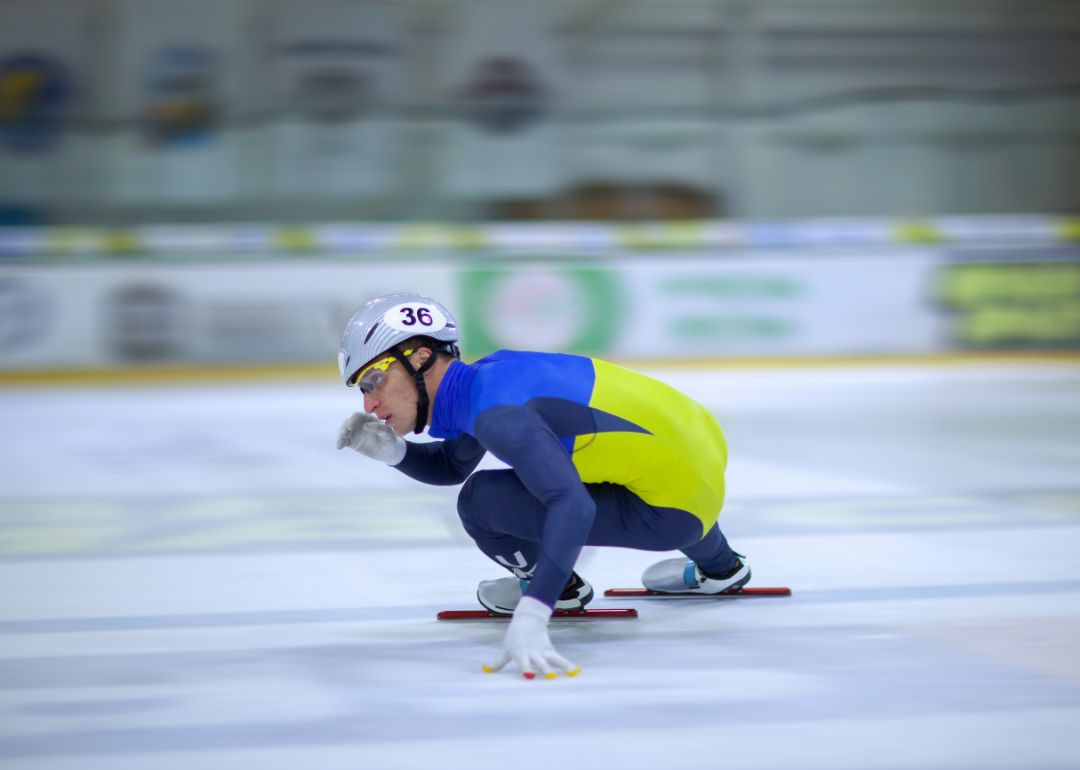
Canva
Competitive speedskating
A man speed skating
– Calories burned per hour based on body weight:
— 130 lbs: 885
— 155 lbs: 1,056
— 190 lbs: 1,294
It’s a race—but on ice. Competitive speedskating races take place at varying lengths. Short track racing is set on a rink roughly the size of a hockey rink and each lap is just over 111 meters or approximately 364 feet. Long-track racing takes place on a 400-meter oval track and races can go up to 10,000 meters. The sport became wildly popular in the Netherlands and Scandinavia as early as the 1800s and is now popular in Norway, South Korea, Canada, Germany, Italy, Japan, Russia, Kazakhstan, China, Belarus, Poland, and the United States.
Speedskating is governed by the International Skating Union and a World Cup is held every year. It is also a popular sport featured in the Winter Olympics. Speedskating requires quite a bit of equipment to get started, including a hard shell helmet, protective glasses, neck guard, cut-resistant gloves, knee pads, and shin guards.
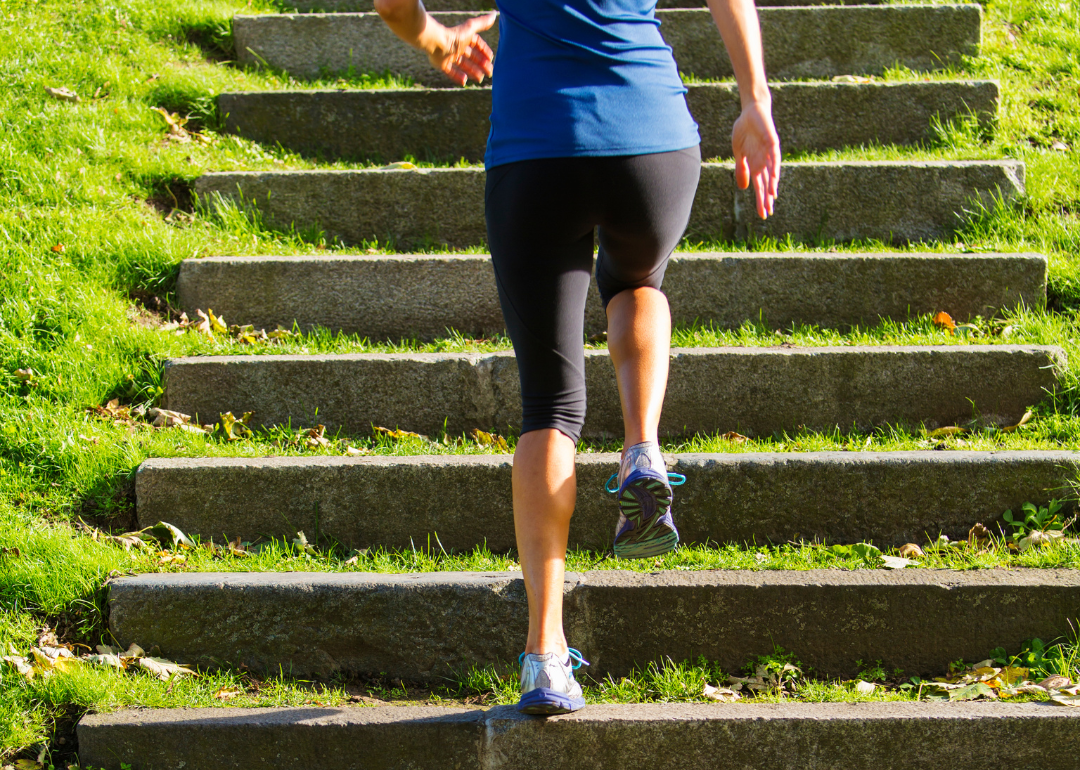
Canva
Running up stairs
A person running up stairs
– Calories burned per hour based on body weight:
— 130 lbs: 885
— 155 lbs: 1,056
— 190 lbs: 1,294
Why go for a long jog when you can just run up the stairs? This high-intensity workout is typically used to help athletes build up speed, power, and cardiovascular fitness. It is also a popular mode of agility training, which is key for most sporting events. Running up the stairs doesn’t require as much equipment as these other calorie-burning sports—just a good pair of running shoes and comfortable fitness clothes. It may also be best to go to a local sporting field and use the bleacher stairs instead of relying on the stairs in your home.
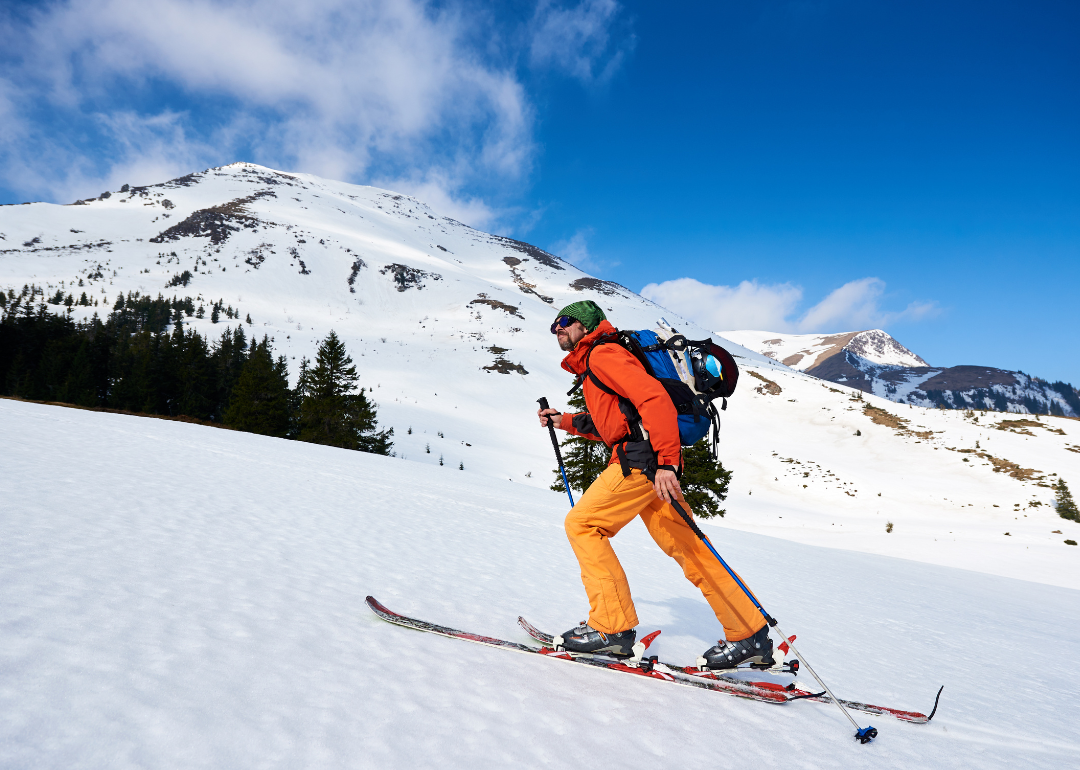
anatoliy_gleb // Shutterstock
Uphill cross-country skiing
A man cross-country skiing uphill
– Calories burned per hour based on body weight:
— 130 lbs: 974
— 155 lbs: 1,161
— 190 lbs: 1,423
For the ultimate calorie-burning workout, try cross-country skiing. It is considered a Nordic sport and has become popular in snow-covered regions in parts of Europe, Canada, Russia, New Zealand, Australia, and the United States. Unlike traditional skiing, cross-country skiers must rely on their own movements to get across snowy terrain, which sometimes involves an uphill trek.
However, if the “uphill” part of this exercise is intimidating, cross-country racing still burns significant calories. At over 8 mph, a 130-pound person can burn 826 calories, a 155-pound person can burn 985 calories, and a 190-pound person can burn 1,208 calories per hour. To get started, you’ll need cross-country skis, poles, boots, and bindings, as well as appropriate outdoor attire such as jackets, pants, gloves, and goggles.
This story originally appeared on Gigacalculator and was produced and
distributed in partnership with Stacker Studio.
